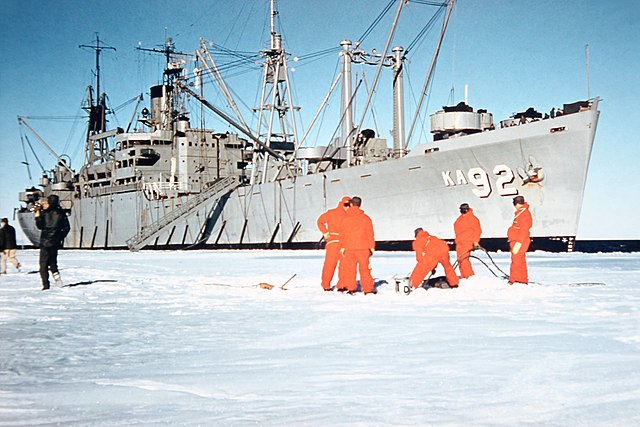Operation Deep Freeze is codename for a series of United States missions to Antarctica, beginning with "Operation Deep Freeze I" in 1955–56, followed by "Operation Deep Freeze II", "Operation Deep Freeze III", and so on.. Given the continuing and constant US presence in Antarctica since that date, "Operation Deep Freeze" has come to be used as a general term for US operations in that continent, and in particular for the regular missions to resupply US Antarctic bases, coordinated by the United States military. Task Force 199 was involved.
U.S. Navy R4D-5L "Dakota" making the first landing at the South Pole, 31 October 1956
Squadron patch for the Navy Antarctic Development Squadron SIX (VXE-6), known as the Puckered Penguins.
Admiral Richard Byrd on board USS Wyandot (Dec 1955)
USS Wyandot mooring at McMurdo Station (Dec 1955)
Richard Evelyn Byrd Jr., an American naval officer, was a pioneering American aviator, polar explorer, and organizer of polar logistics. Aircraft flights in which he served as a navigator and expedition leader crossed the Atlantic Ocean, a segment of the Arctic Ocean, and a segment of the Antarctic Plateau. He is also known for discovering Mount Sidley, the largest dormant volcano in Antarctica.
Byrd in 1928
Richard Byrd in flight jacket, 1920s
The Fokker F.VII of Byrd and Bennett in flight
The Fokker FVIIa/3M – Josephine Ford, on display at The Henry Ford Museum








